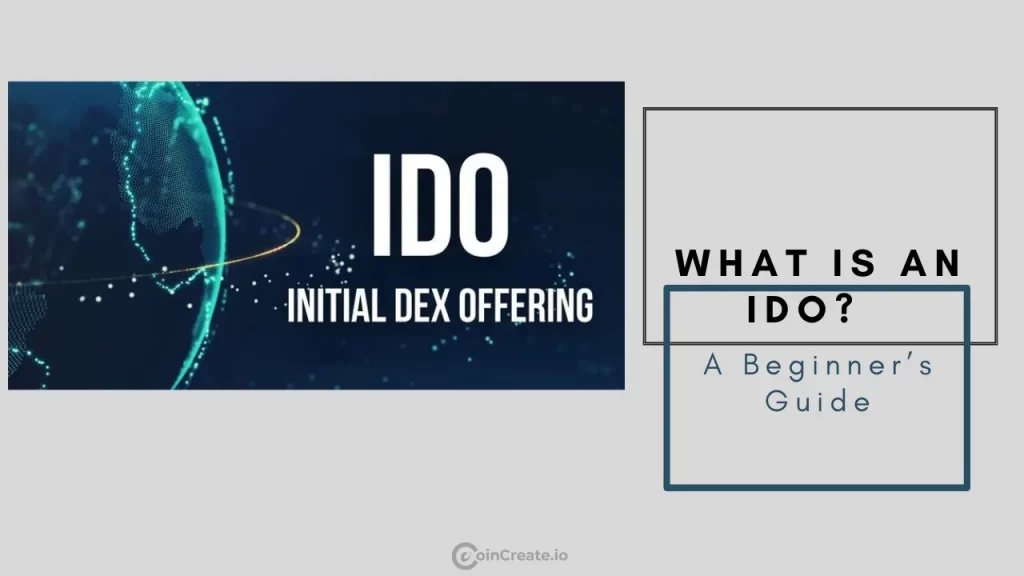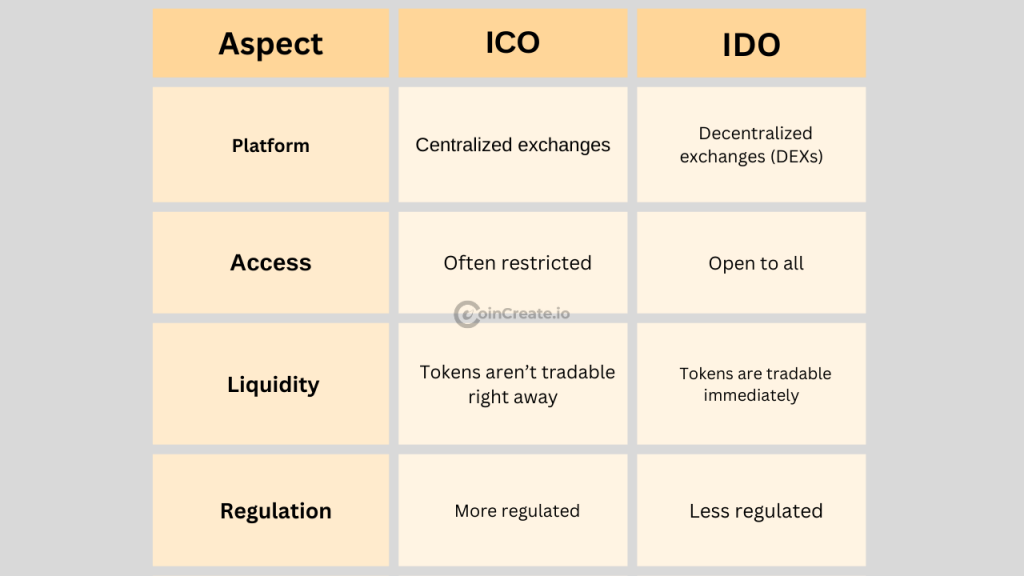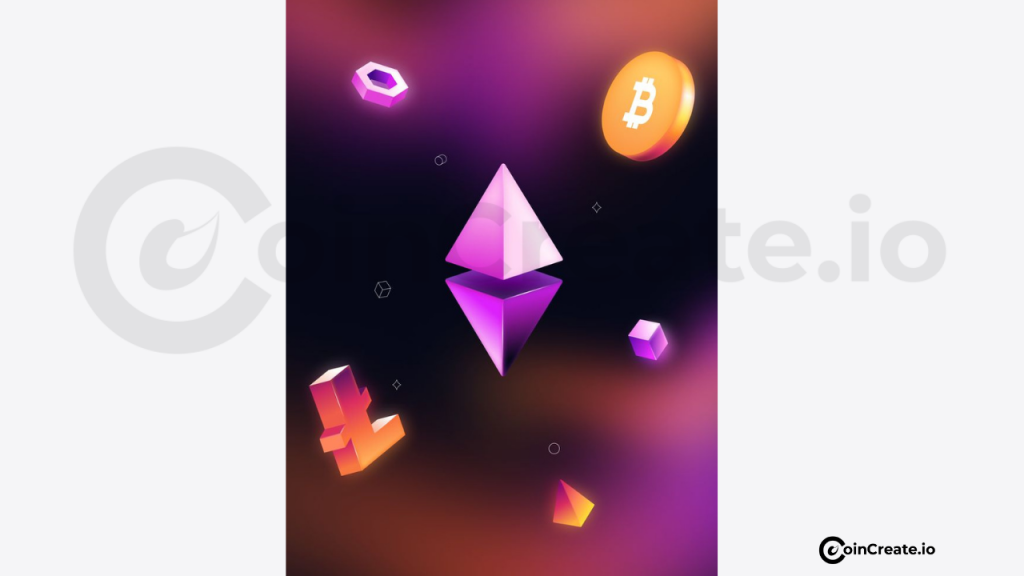What is an IDO (Initial DEX Offering) in Crypto? A Beginner’s Guide
Imagine you are at a farmer’s market, but instead of buying fresh produce, you are picking up shiny new cryptocurrency tokens. That’s kind of what an Initial DEX Offering (IDO) feels like—a modern, decentralized way for crypto projects to raise funds by launching their tokens directly on decentralized exchanges (DEXs). No middlemen, no gatekeepers, just a direct connection between projects and investors. Sounds cool, right? Let’s break it down in simple terms.

What Does it Mean in Crypto?
An IDO is like a crypto project’s grand opening sale. Instead of launching their tokens on centralized platforms (think big-name exchanges like Coinbase), they go straight to decentralized exchanges (DEXs) like Uniswap or PancakeSwap. These DEXs use liquidity pools and smart contracts to make the process smooth and transparent.
Here’s the kicker: IDOs are community-driven. Unlike older methods like Initial Coin Offerings (ICOs), where projects had to jump through hoops to get listed, IDOs let the DEX handle the vetting. This makes it easier for smaller investors to get in on the action early.
Why Are IDOs So Popular?
IDOs have taken the crypto world by storm, and for good reason. Here’s why they’re a big deal:
- Instant Liquidity: As soon as the IDO ends, you can start trading your tokens. No waiting around for weeks or months.
- Lower Costs: Projects save money by skipping the hefty fees charged by centralized exchanges.
- Accessibility: Anyone with a crypto wallet can participate, making it easier for everyday folks to invest in early-stage projects.
How Does an IDO Work? A Step-by-Step Breakdown
Let’s walk through the process of an IDO, step by step:
Project Preparation
- Token Creation: The project team creates a new cryptocurrency token. Think of it like designing a new product.
- Business Strategy: They come up with a plan to attract investors—think marketing, partnerships, and a clear roadmap.
Choosing an IDO Platform
- Selecting a DEX Launchpad: Projects pick a DEX platform that fits their goals. Popular options include Uniswap, PancakeSwap, and Polkastarter.
Setting Up the Token Sale
- Smart Contracts: The team sets up smart contracts to automate the sale. These contracts define things like token price, sale duration, and purchase limits.
- Liquidity Pool: They create a pool of tokens and funds to ensure there’s enough liquidity for trading right after the sale.
Launching the Token
- IDO Launch: The token sale goes live! Investors can buy tokens using cryptocurrencies like Ethereum or Binance Coin.
- Participation Process: Most IDOs have limits to prevent one person from buying up all the tokens.
Trading Begins
- Instant Liquidity: Once the IDO ends, the tokens are immediately tradable on the DEX. This means you can buy, sell, or hold them right away.
The Pros of IDOs: Why They’re a Win-Win
IDOs come with a bunch of benefits for both projects and investors:
- Instant Liquidity: No waiting around—tokens are tradable right after the sale.
- Accessibility: Smaller investors can get in on the ground floor of exciting projects.
- Lower Fees: Projects save money, and investors don’t have to deal with high costs.
- Transparency: Smart contracts ensure everything is fair and above board.
- Community Engagement: IDOs often build a loyal community of early supporters.
The Risks of IDOs: What to Watch Out For
Of course, IDOs aren’t all sunshine and rainbows. Here are some risks to keep in mind:
- Scams and Fraud: The decentralized nature means anyone can launch a token. Be wary of “rug pulls,” where developers disappear with the funds.
- Price Volatility: New tokens can swing wildly in price, especially in the early days.
- Lack of Regulation: IDOs operate in a less regulated space, which can mean fewer protections for investors.
- Smart Contract Bugs: If there’s a flaw in the smart contract, it could be exploited by hackers.
- Complexity: If you’re new to crypto, the world of DEXs and IDOs can feel overwhelming.
IDO vs. ICO: What’s the Difference?

In short, IDOs are faster, more accessible, and more decentralized than ICOs.
Where Can You Find IDOs? Top Platforms to Know
If you’re ready to dive into the world of IDOs, here are some popular platforms to check out:
- Polkastarter: A cross-chain launchpad that supports projects on multiple blockchains.
- Binance Launchpad: Part of the Binance ecosystem, known for high-quality projects.
- DAO Maker: Focuses on community-driven projects with fair token distribution.
- Tokonomo: A user-friendly platform supporting Ethereum and Binance Smart Chain.
- Gempad: Uses a tiered system to evaluate project safety based on community feedback.
Real-World Success Stories: IDOs That Made It Big
Let’s take a look at some projects that nailed their IDOs and went on to achieve big things:
- Uniswap: The king of decentralized exchanges, Uniswap launched its token through an IDO and became a cornerstone of the DeFi (decentralized finance) world.
- PancakeSwap: Built on Binance Smart Chain, PancakeSwap offers lower fees and faster transactions, making it a favorite among users.
- Polkastarter: This cross-chain launchpad has hosted successful IDOs for projects like MahaDAO and Ethernity Chain.
- DAO Maker: Known for its community-centric approach, DAO Maker has helped projects like Step.app and Sweat Economy raise millions.
Final Thoughts: Is an IDO Right for You?
IDOs are a powerful tool in the crypto world, offering speed, accessibility, and community-driven fundraising. But like any investment, they come with risks. If you’re thinking about participating in an IDO, do your homework. Research the project, understand the risks, and make sure you’re comfortable with the platform you’re using.
The world of crypto is exciting, but it’s also fast-paced and ever-changing. Whether you’re a seasoned investor or just starting out, IDOs offer a unique opportunity to get in on the ground floor of innovative projects. Just remember: DYOR (Do Your Own Research) and never invest more than you can afford to lose.

